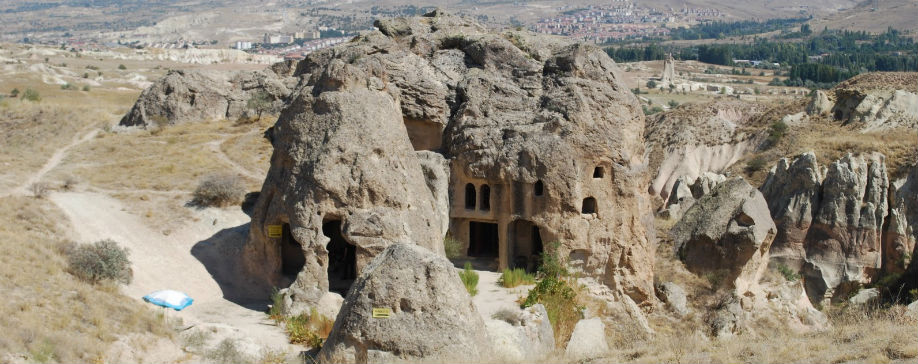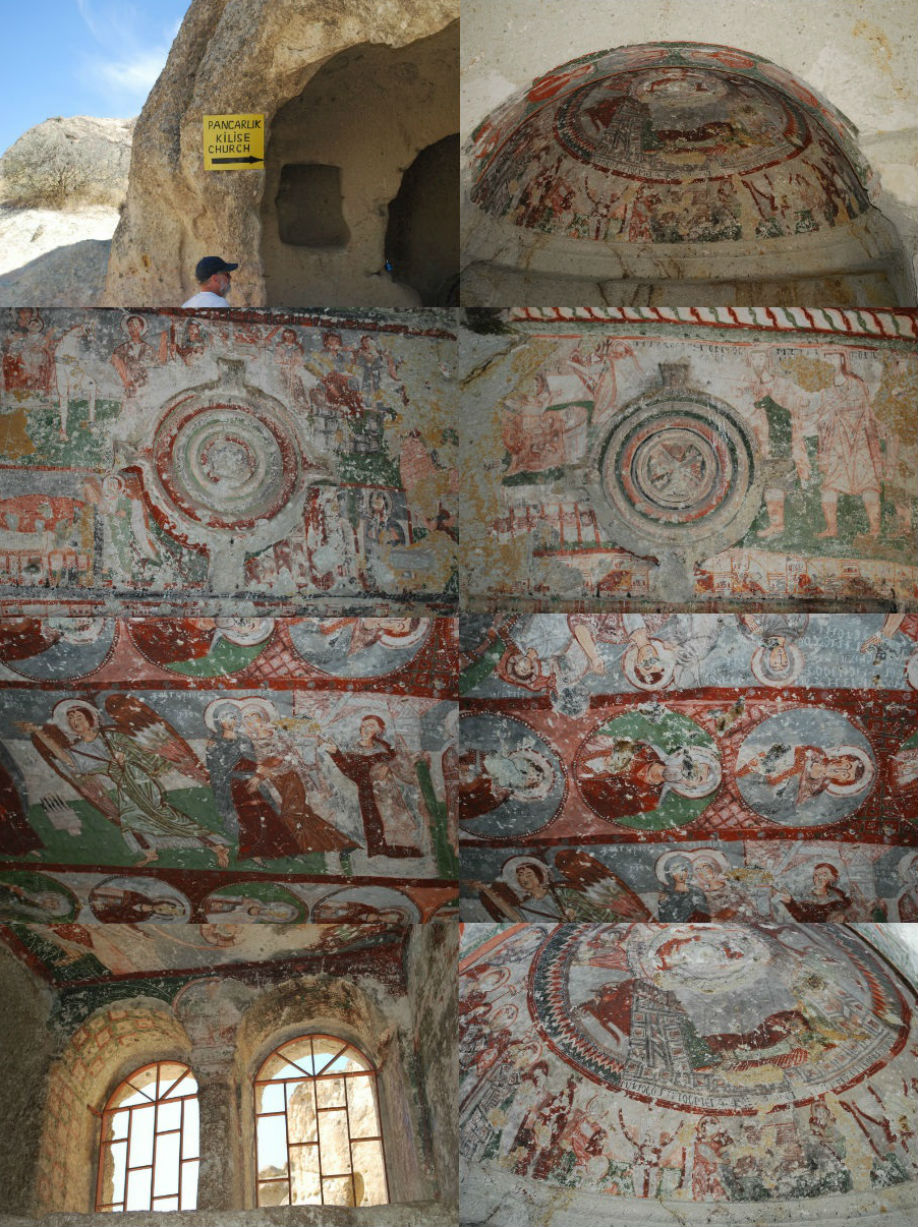Pancarlik valley lies to the south of Ortahisar, and to the right of the road leading from Urgup to Mustafapasa. Travelling south from Mustafapaşa to Soğanlı you will pass a turning on the right that leads to the Pancarlik Valley, one of Cappadocia‘s many under-visited valleys. Not only is the scenery spectacular, with undulating ridges of pink rock and dollops of meringue-like white rock, but there are three rock-cut churches to visit here too.
Most important of these churches is the Pancarlik Church, a monastic church housed inside a group of rock cones. The flat ceiling of the church is still completely covered with frescoes in which reds and greens predominate as is the upper part of the small apse and large parts of the north and south walls. Even when the church is locked you can still see these paintings through the grille gate.
The church has one nave, one apse and a flat ceiling. The frescoes in this church are well preserved, and most of them are painted on a green background. At first glance it appears that two different artists were responsible for the paintings, but on closer inspection it is apparent that the same artist painted all the frescoes. In the church, the scenes from the Bible follow one another in sequence and portraits of saints in insets border these scenes on both sides. The church dates back to the first half of the 11th century.

Inside this cone shaped rock is a Pancarlik Church and Monastery. The frescoes are in excellent condition and finished off in green and absolutely beautiful.



This is a fascinating experience. We had the pleasure of being invited into a cave home that was hand-carved into the soft rock by the lady's grandfather about 90 years ago. The homes are very comfortable and quaint, filled with woven carpets, hand crafted furniture and at least one weaving loom. Every house has a panoramic view of the valley….
They are all over Cappadocia, don't get stuck seeing them all, it can be too much of a good thing. We thoroughly enjoyed the ones we saw.
I came to this region for the lovely rock formations, cave dwellings, and interesting history. The rock is soft a kind of tuffa limestone. When Roman and subsequent invaders came the locals and especially early Christians (who were hunted n exterminated) built homes, churches and entire cities (including stables) in this area.
Seeing the spaces people lived and worshiped in was really an eye opener to the way life was in those ancient times
Got me thinking about pressures and styles of existence. Was it just a hiding place or was it a preferred way of life? PS the Romans could knock you house down but a cave is hard to destroy
Take at least three days if you can. The highlight was an early morning balloon ride. Not sure there is anything like it elsewhere.
And it made me wonder why we ever stopped living in caves! They stay cool in the summer and warm in the winter and have so much charm. This is a must see in the area. The history is incredible.
A steep walk in places but a marvellous place to visit and hard to imagine people living there. Plenty of churches to see but on the paintings , all the saints and biblical faces had been scratched out.
The colours, and the whole view is amaising in Pancarlik Valley.
a landscape like you'll never see again, very interesting, seeing the eyes gouged out on the icons was disturbing